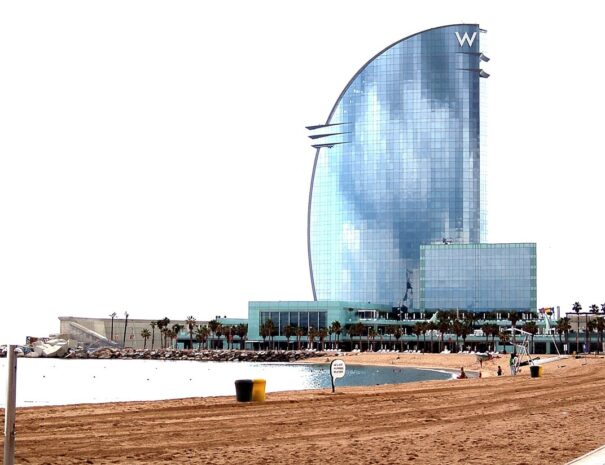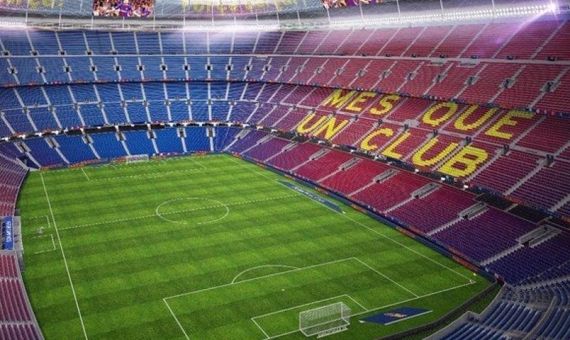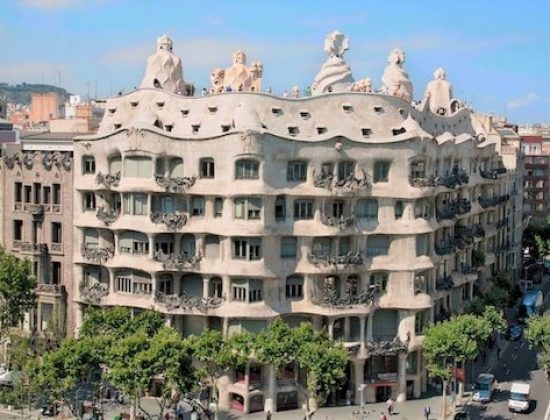
La Barceloneta
Check out our full guide to La Barceloneta, Barcelona’s famous urban beach. There are a ton of tourist traps, and here you find how to avoid them. … Read More
There are many tourist attractions in the Gothic Quarter in Barcelona. These include the Cathedral of the Holy Cross and Saint Eulalia, the City Hall, the Palace of the Generalitat, and many lovely squares.
The Barri Gòtic is the central element of the municipal district of Ciutat Vella, the old town of Barcelona. This area of Barcelona houses the greatest collection of Gothic buildings in all of Europe. A large number of bars, restaurants and shops keep the area in constant activity until late at night.
The Gothic Quarter also contains the remains of the Roman Barcino and many of the main medieval buildings that are still standing in the city.
Located in the Gothic district. is a square is the political centre of Catalonia and Barcelona because it is the location of the City Hall and the Palace of the Generalitat, which is the house of the presidency of Catalonia.
Plaça de Sant Jaume (named after a church demolished in 1824) has been, since the 14th century, the center of political life in the city. A large esplanade houses the Ajuntament (Barcelona City Council) and the Palau de la Generalitat, seat of the autonomous government of Catalonia.
During the Mercé festivities (in September), the Plaza de San Jaime hosts a competition of castells, incredible human towers in which up to 500 people can participate and reach extraordinary heights.
Another indispensable square of the Gothic Quarter is Plaça del Rei or “King’s square”. Situated here is the Grand Royal Palace which was the official residence of the Counts of Barcelona and the Kings of Aragon. It is a must for history lovers, not only because of the important building but also because it is the square where the murder attempt of King Ferdinand “The Catholic” in December 1492 occurred. You can also contemplate many renaissances and gothic constructions around this square.

Since the beginning of the Middle Ages, the Plaza del Rey has been the seat of the Royal Palace, one of the main residences of the Counts of Barcelona. The original structure was constructed where the old Roman walls use to stand. Over the centuries buildings were erected on the sides of the square.
Most of the structure that is currently standing dates from the fourteenth and fifteenth centuries. The Royal Palace and the archaeological remains that lay beneath it constitute the city’s Museum of History. The museum will transport you through 1500 years of life of Barcelona.
From the Plaza del Rey, you can access a five-story tower: the Mirador del Reig Martí (King Martín I of Aragón, the last of the Aragonese kings, and Count of Barcelona), from where there are magnificent views of the city. This viewpoint connects the Royal Palace with the Lieutenant’s Palace (Palau Lloctinent), a Renaissance building built in 1549 by order of Emperor Charles V as a residence.
The spectacular Cathedral of Barcelona one of the essential stops when exploring the Barrio Gotico. The Cathedral is located in the Pla de la Seu and features an impressive Gothic façade that is reminiscent of the great French cathedrals. The building is 93 meters long, 40 meters wide, and has a 53-meter high bell tower and a 70 m central tower.

The exterior is a mix of austere and opulent decorated with some of the most spectacular gargoyles you will ever see. An image of Christ dominates the main entrance, surrounded by sculptures of the 12 Apostles. Inside, on both sides of the nave, there is a succession of chapels, installed between the buttresses.
In the interior, the temple features intricately carved wood choir stalls and the crypt, which houses an alabaster sarcophagus with the remains of Saint Eulalia, patron saint of Barcelona. Above the crypt, the altar rests on two robust Visigothic capitals that are preserved from the early church.
In the Ánimas del Purgatorio chapel, you can find an elevator that will take you up to the terrace, where walkways allow you to explore the roof of the temple and enjoy splendid views of the Gothic Quarter of Barcelona.
On the opposite side of the Cathedral, across the square, is the Casa de la Pia Almoina (House of Charity), built upon the remains of one of the towers of the Roman wall. Inside is the Diocesan Museum, where you can see a collection of Romanesque and Gothic religious art.
An open-air antiquities market is set up every Sunday morning, popularly known as the “Gothic market” is set up in front of the cathedral’s façade.
Frederic Marès I Deulovol was a very eccentric artist, sculptor, and traveler. This museum, which is home to an extraordinary collection of works by Marès, opened its doors in 1948. The building was once the main center of the Inquisition in Barcelona during the 15th century. It is accessed from the Plaça de Sant Iu garden of the old Palau Reial, and from the Carrers dels Comtes, next to the Cathedral.
The museum has a vast collection of sculptures classified by periods (Antiquity, Romanesque, Gothic, Renaissance, Baroque and 19th century) and thousands of everyday objects belonging to the 19th century, including pipes, fans, and photographs.
This is the most Instagram worthy site of the Gothic Quarter. A beautiful, opulent, Gothic-style bridge that connects the Casa dels Canonges (House of the Canons) with the Palau de la Generalitat and which has now become one of the architectural icons of the city.
It was designed and built in 1928 by the architect Joan Rubió i Bellver (a disciple of Gaudí). It is located in Carrer del Bisbe, a narrow pedestrian path that connects Plaça de Sant Jaume with Plaça Nova.

The Plaça del Pi (Plaza del Pino) main feature is the Church of Santa María del Pino. In front of this beautiful gothic church, there is another 17th-century building with sgraffito decoration, which was the headquarters of one of the city’s artisan guilds.
Periodically the Plaza del Pino becomes the sight of an open-air marketplace that offers all kinds of artisan gastronomic goodies. On the other side of Plaça del Pi there is another very pleasant square, Plaça de Sant Josep Oriol, with several bars and terraces where you can enjoy a drink or a bite to eat.
Prtrixtol Street is well known across the city for its many chocolate shops (known as “farms”). If you are a chocolate lover, you would really try a mug of Spanish hot chocolate accompanied by an ensaimada, churros, and some tender gingerbreads. Other sweets you will find, and should really try are crema catalana, Montserrat cottage cheese, curds, and rice pudding …). La Pallaresa and Granja Dulcinea are two of the more well know sweet shops on this street.

Check out our full guide to La Barceloneta, Barcelona’s famous urban beach. There are a ton of tourist traps, and here you find how to avoid them. … Read More

Check out our full guide to Port Aventura one of the premier amusement parks in all of Spain, and a great place to visit if you have kids. … Read More

Check out our full guide to the Camp Nou, the legendary soccer stadium, home of Barcelona FC, one of the best clubs in Europe of all time. … Read More

Check out our guide to Casa Mila, one of the essential sites to visit in Barcelona. Casa Mila is one of the houses in Barcelona designed by Gaudi. … Read More
is proudly powered by WordPress